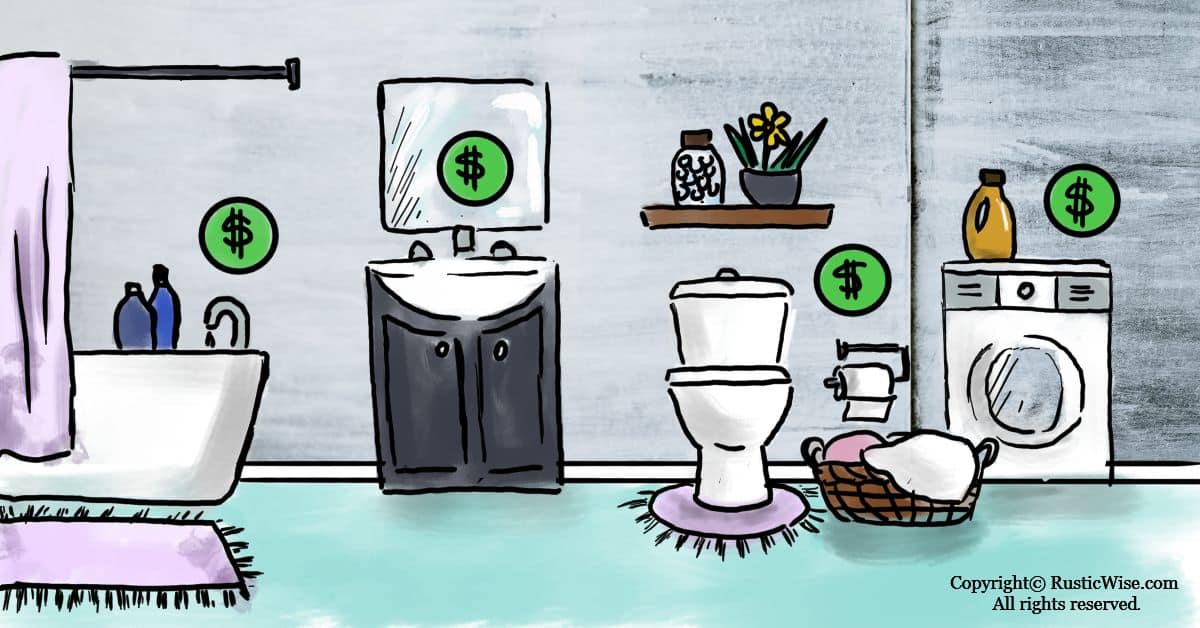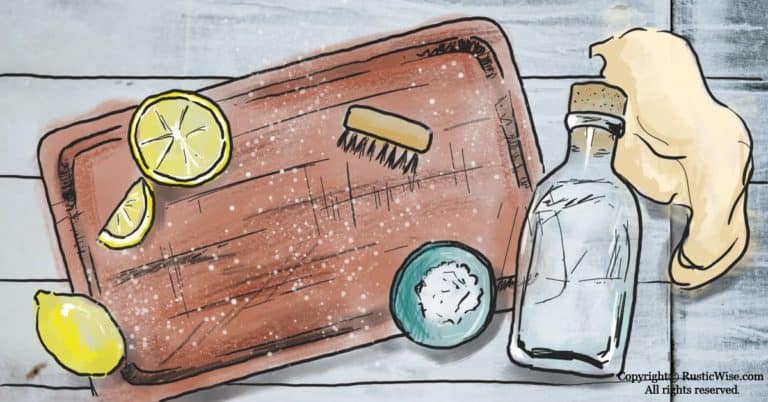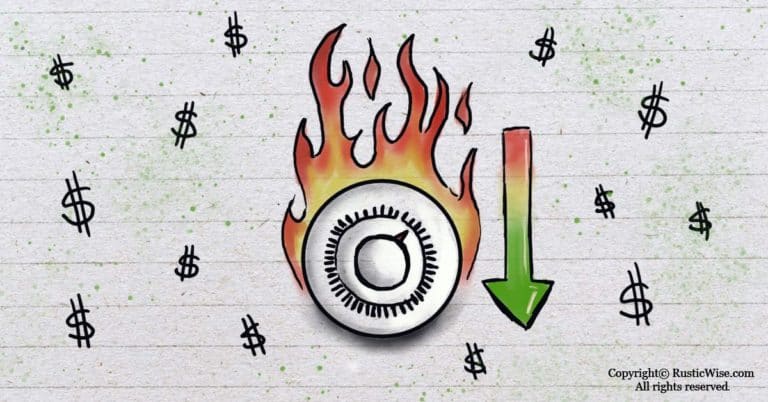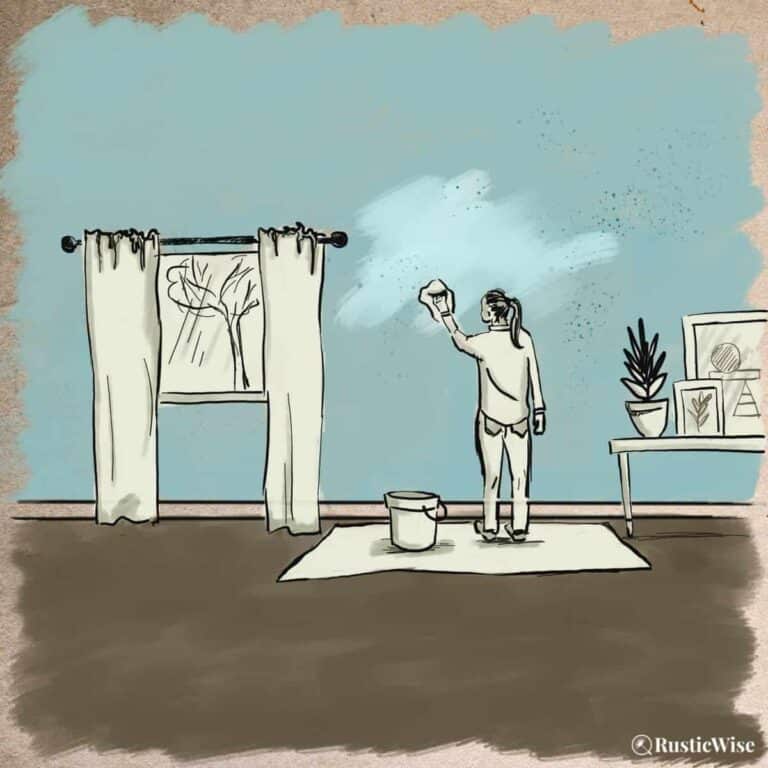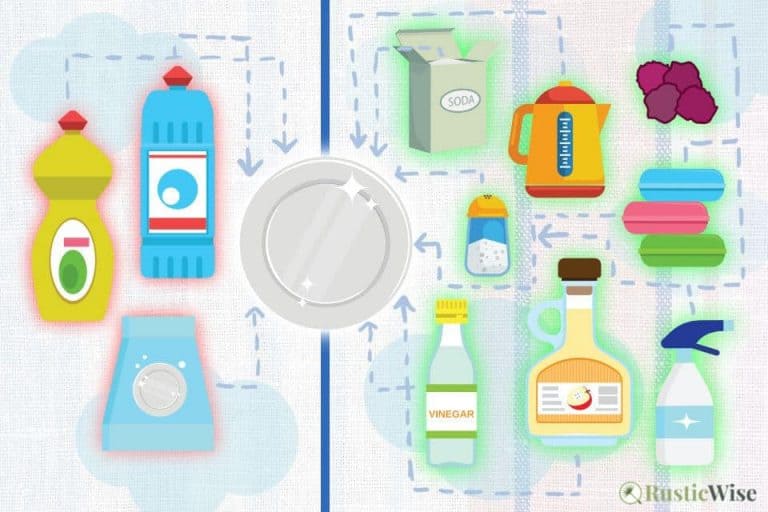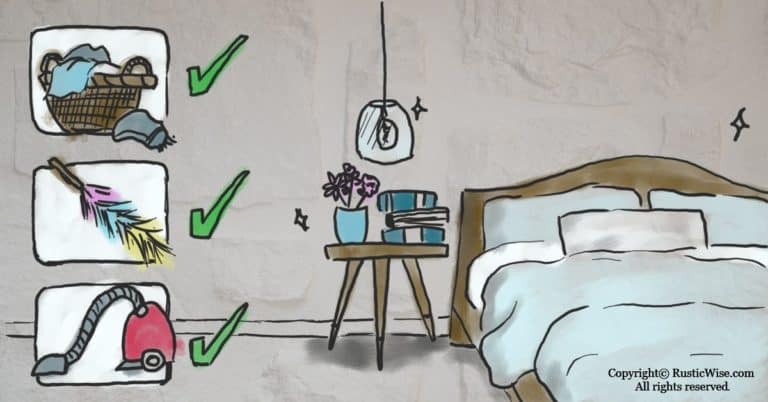30 Smart Ways To Save Money on Your Water Bill
Many things about homeownership are out of our control. We can’t do much about taxes, utility rates, or bank rates. However, when it comes to water usage, there are easy ways to save money on your water bill. By making a few changes around the house and changing our daily habits, you’ll see savings on your monthly water bill—a win-win for your wallet and the environment.
In Canada, the average person uses about 87 gallons (329 liters) of water each day, according to McGill University. In the U.S. this number is similar. The USGS estimates each person uses between 80-100 gallons (303-379 liters) for indoor household uses.
Here’s the breakdown of domestic water use in Canada:
- Drinking and preparing meals: 10 percent
- Cleaning (including laundry): 25 percent
- Toilet flushing: 30 percent
- Bathing: 35 percent
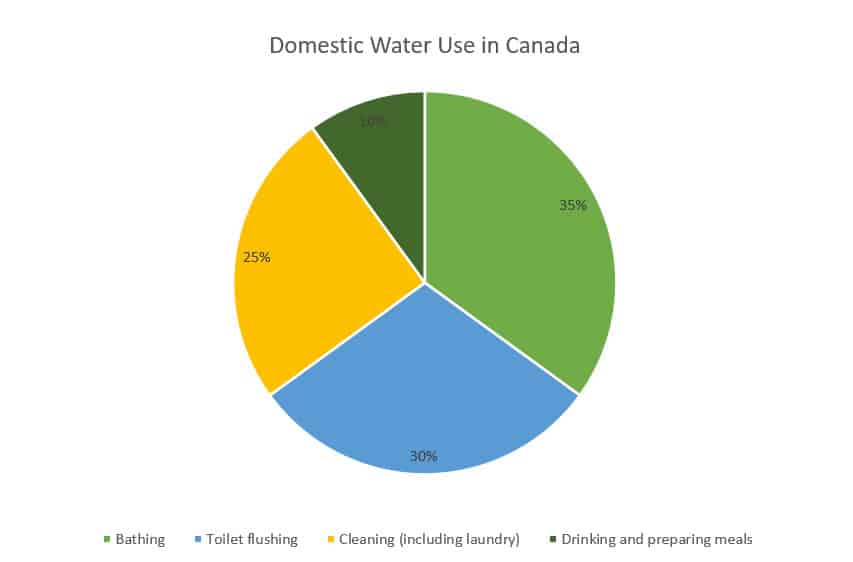
Tip: There’s a handy water calculator from Home Water Works that helps you figure out how much water your household uses based on the number of people in your home as well as your habits. Just enter your Canadian postal code, or American zip code to get started.
Money-saving habits: ways to save money on your water bill
Old habits die hard. When it comes to routine habits from brushing our teeth to how many loads of laundry we do each week, changes are difficult. By making a conscious effort to lower household water consumption, you’ll reap the benefits of lower water bills. Ka-ching!
1) Turn off the water when you’re brushing your teeth
We’ve all heard this, but how many of us practice this on a (twice) daily basis? The U.S. Environmental Protection Agency (EPA) estimates that by practicing this simple habit of turning off the tap while brushing, you could save 8 gallons (30 liters) a day, or 200 gallons (757 liters) each month.
2) Turn off the water when you’re scrubbing your hands
If we’re practicing proper handwashing technique, we should be scrubbing for at least 20 seconds. But keeping the water running while we’re scrubbing actually washes off all the soap, which defeats the purpose.
Tip: The next time you need to wash your hands, wet your hands. Turn off the tap. Apply soap and scrub for 20 seconds. Turn on the tap to rinse.
3) Turn off the shower while you’re lathering up
The same principle applies when we’re shampooing in the shower. We don’t want to rinse off the shampoo while we’re lathering. Save some water and soap suds by turning off the shower for a few minutes until you’re ready to rinse.
4) Choose showers over baths
It takes roughly 106 gallons (400 liters) of water to fill a bathtub to the top. The average shower uses 2.5 gallons (9.5 liters) a minute. If you take reasonably-timed showers, you’ll save water.
5) Take shorter showers
You’ll end up saving water and money when you take showers in most cases. But, if your showers are excessively long, you may end up using more water than it would take to fill a bathtub to the brim. Aim for showers that are less than 10 minutes and you’ll come out ahead.
6) Use less water for baths
Since saving water is the name of the game, aim to have showers regularly, and have baths only occasionally, say, once a week or less. If a full bathtub uses 106 gallons (400 liters) of water, try reducing the amount of water you use for a bath. Half a bath is roughly 53 gallons (200 liters), while a bath that’s one-third full uses around 35 gallons (133 liters).
7) Consider rewearing clothes to do less laundry
While we’re not condoning unhygienic habits (please continue changing your underwear on the daily), we should rethink our laundry habits. Do you really need to wash a hoodie that you’ve only worn once? How about that barely-used sweater?
The average American family does eight loads of laundry a week. By cutting down on the number of laundry loads we do, we’re able to cut down on water usage.
8) Wait for a full load
Running a half empty load in your dishwasher or washing machine is just not water-efficient (or energy-efficient). Wait until you have a full load before hitting that Start button.
9) Skip the garbage disposal
While it’s convenient to have a sink garbage disposal, it uses up a lot of water. Besides, those kitchen scraps would be better off in a backyard compost.
10) Forget about pre-rinsing dishes
Save on water by scraping leftover food scraps with a rubber spatula instead of pre-rinsing dishes before placing in the dishwasher. If this doesn’t jive with you, consider filling a small basin in your sink with just enough water to let your dishes soak before putting them in the dishwasher.
11) Don’t overfill your water kettle
Is it a habit to fill the kettle all the way to the top even when you’re only serving tea or coffee for one? Filling the kettle with only as much water as you need saves water, energy, and time.
12) Keep a cool water pitcher in the fridge
If you like your drinking water cold, keep a pitcher of water, or pre-fill water bottles with tap water. This way, your ice-cold water is ready to go when you need it. This wastes less water as you wait for the water to get cold.
13) Forget about handwashing dishes
Contrary to popular belief, handwashing dishes actually uses more water than running a full load of dishes in your dishwasher. According to Nerd Wallet, most faucets flow at a rate of 2 gallons (8 liters) a minute. Compare this to the average dishwasher which uses 6 gallons (23 liters) a cycle. So, if you need more than 3 minutes to do the dishes, a dishwasher uses less water.
14) Collect wasted water
We all waste running water while we wait for the shower or taps to get the temperature just right. While we’re waiting for the water to warm up, or cool down, we’re letting perfectly good water go down the drains.
Here’s an easy way to reuse water: consider keeping a bucket or watering jug nearby to save and collect this wasted water for other uses around the house.
Repairs and replacements around the house: ways to save money on your water bill
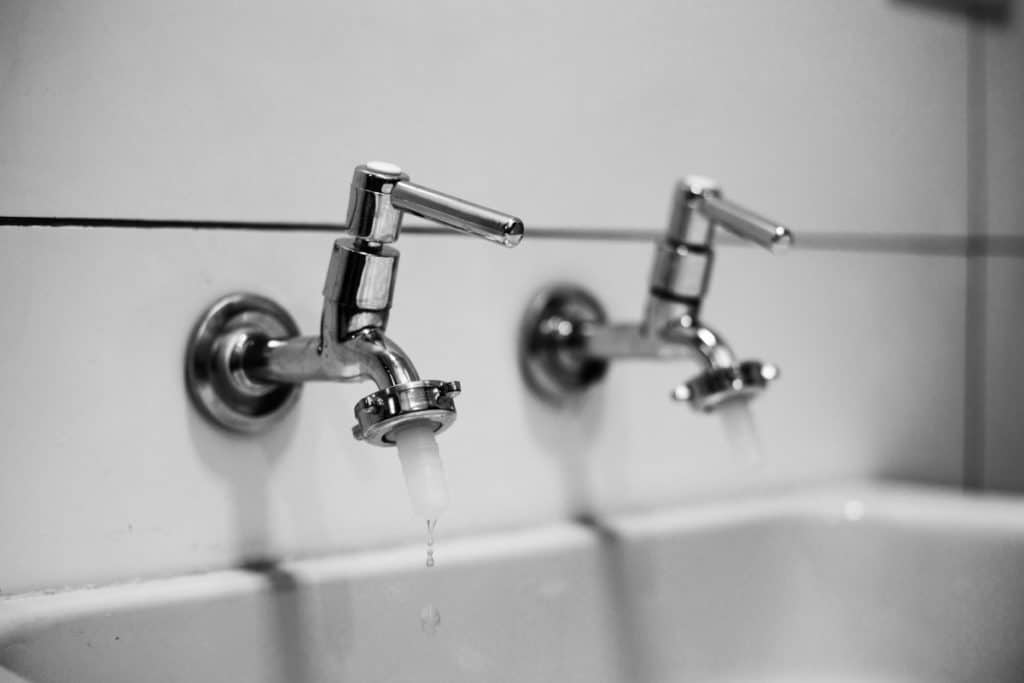
Doing a few repairs and replacements around the house is a key way to reduce water wastage.
According to the U.S. EPA, most households can expect to save around 10 percent on monthly water bills by fixing leaks around the house.
15) Repair any leaky faucets
Not only is the sound of dripping annoying, leaking faucets are also a colossal waste of water. The EPA estimates that a faucet which drips once per second wastes over 3,000 gallons (11,356 liters) of water each year. This would be enough water for over 180 showers.
16) Repair a leaky toilet
There are many reasons why a toilet may be leaking. Sometimes water comes from the base of the toilet, while other leaks come from the bowl, water tank, or water shutoff valve. It’s important to diagnose problems with a leaky toilet to prevent any costly water damage to your flooring and to reduce water wastage.
17) Repair leaky showerheads
The EPA estimates that a leaky showerhead which drips 10 drops a minute wastes over 500 gallons (1,893 liters) of water over one year. That’s enough to do 60 loads of dishes in your dishwasher.
18) Replace that toilet flapper
Also called the flush valve seal, a toilet flapper is made of rubber. With time and regular use, toilet flappers are prone to tears or breakage leading to a leaky toilet. Old toilet flappers are a common cause of toilet leaks, so make sure you make replacing your toilet flappers part of your annual maintenance routine. Luckily, toilet flappers are easy to replace, inexpensive and easily found at hardware stores.
19) Use less water each flush
As toilet flushing accounts for roughly 30 percent of the average household’s water consumption, it’s a good idea to cut down on water usage each time you flush.
Use less water per flush by placing a filled plastic bottle with water, or a toilet tank bank insert. This helps to displace some water each time you flush. WikiHow has a tutorial on how you can convert any old toilet into a low-flush one by using the bottle trick.
20) Insulate hot water pipes
A simple way to speed up the time it takes for your shower to warm up is to keep your hot water pipes insulated. Uninsulated pipes don’t retain heat well leading to heat loss and more water wastage.
Upgrades on appliances: ways to save money on your water bill
When shopping for a new water-efficient appliance, look for the WaterSense label. WaterSense products use less water, which is better for your wallet and the environment.
WaterSense faucets for example, reduce water flow by 30 percent or more according to the EPA.
21) High-efficiency appliances
Looking for a new washing machine? Look for an ENERGY STAR model which uses 35 percent less water and 20 percent less energy than standard washers.
ENERGY STAR dishwashers save roughly 8,400 gallons of water each year.
22) Dual-flush toilets
Dual-flush toilets are great because you can determine how much or how little water you use depending on the (ahem) load you left in the toilet.
23) Install low-flow faucets
Install a faucet aerator to reduce water consumption. Faucet aerators reduce water usage by 25-50 percent each tap. An aerator works by introducing air into the water flow so you won’t notice much difference in terms of water flow while saving water (and money!).
24) Install low-flow showerheads
We can all feel a little less guilty about water consumption when we install a low-flow showerhead. According to the EPA, installing just one WaterSense showerhead model saves the average household 2,700 gallons (10, 221 liters) of water every year. This equates to roughly $70 in energy and water savings each year.
Lawn care and yard work: ways to save money on your water bill
25) Collect rainwater
Rain barrels are inexpensive and a great way to collect free water from mother nature. Use rainwater to water your plants, flowers, and garden.
26) Hold up on the hose
Do you really need to use water to rinse off your driveway? Skip the hose if a broom will do in its place.
27) Landscape wisely
Native plants are naturally more resistant to heat and drought, and require less watering and maintenance. Ensure your landscaping includes a healthy mix of native plant species. Apply a layer of mulch around plants to keep moisture in.
28) Water wisely
Avoid overwatering your lawn which leads to mold problems and root diseases. The best time of the day to water your lawn is bright and early in the morning. This allows the moisture to fully soak in. Avoid watering your lawn during the midday heat. It’s also best to avoid watering in the evening as this increases the risk of fungal issues if grass doesn’t get a chance to dry.
29) Use a timer for your sprinkler
Sometimes we set up the sprinkler, forget about it, and end up overwatering the lawn. Avoid overwatering your lawn and wasting precious water by setting a timer on your sprinkler.
30) Better ways to wash your car
Unless you’re very particular about the way you wash your car, you can save your time and efforts by going to your local coin-operated car wash. Some car washes recycle water to reduce water consumption. Washing your car at home uses up to 106 gallons (400 liters) of water!
If you insist on washing your car at home, use a hose with an automatic shutoff nozzle. The Maryland Department of the Environment says that the average garden hose uses 10 gallons (38 liters) per minute. A hose equipped with an automatic shutoff nozzle saves up to 70 gallons (265 liters) each time you wash your car.
If you use a power washer, you’ll save even more water. You can save up to 80 gallons when washing your car with a power washer over a traditional garden hose.
The final word
Water is a precious resource that we can all work together to use less of on a daily basis. While some water-saving tips require a bit of repairs or maintenance, and others may require an investment, many effective water-saving tips are as easy as turning off the tap.
👉 If you like this post, see other Frugal Ideas To Save Money. 💰
Would you like more timeless tips via email?
Fun tips to help you live an independent, self-sustaining lifestyle. Opt-out at any time.


References:
- McGill University, Water is Life!, Water at Home, How much are we using?,https://www.mcgill.ca/waterislife/waterathome/how-much-are-we-using. Accessed December 2020.
- USGS, Water Q&A: How much water do I use at home each day?, https://www.usgs.gov/special-topic/water-science-school/science/water-qa-how-much-water-do-i-use-home-each-day?qt-science_center_objects=0#qt-science_center_objects. Accessed December 2020.
- Home Water Works, Water Calculator, https://www.home-water-works.org/calculator. Accessed December 2020.
- The EPA Blog, Earth Month Tip: Turn off the tap, https://blog.epa.gov/2014/04/23/earth-month-tip-turn-off-the-tap/. Accessed December 2020.
- Sheehy, Kelsey (21 March 2019). “6 Ways to Lower Your Water Bill,” Nerd Wallet. Accessed December 2020.
- United States Environmental Protection Agency (EPA), Fix a Leak Week, https://www.epa.gov/watersense/fix-leak-week. Accessed December 2020.
- WikiHow, How to Convert Any Toilet to a Low Flush Toilet, https://www.wikihow.com/Convert-Any-Toilet-to-a-Low-Flush-Toilet. Accessed December 2020.
- United States Environmental Protection Agency (EPA), WaterSense Products, https://www.epa.gov/watersense/watersense-products. Accessed December 2020.
- United States Environmental Protection Agency (EPA), Bathroom Faucets, https://www.epa.gov/watersense/bathroom-faucets#:~:text=Specification-,Faucet%20Flows,per%20minute%20without%20sacrificing%20performance. Accessed December 2020.
- Energy Star, Dishwashers, https://www.energystar.gov/products/dishwashers. Accessed December 2020.
- The Maryland Department of the Environment, Water Conservation and Washing Vehicles. https://mde.maryland.gov/programs/water/waterconservation/pages/carwashing.aspx#:~:text=A%20standard%20garden%20hose%20uses,as%2070%20gallons%20per%20wash. Accessed December 2020.

Author: Josh Tesolin
Josh is co-founder of RusticWise. When he’s not tinkering in the garden, or fixing something around the house, you can find him working on a vast array of random side projects.

